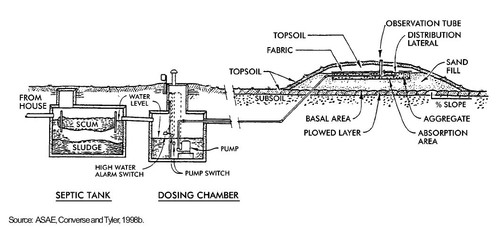On-Site Sewage Systems
There are various types of onsite sewage disposal field designs, depending on your house design and site conditions. Most systems installed today are contour (C1, C1 raised, C2, C2 raised, C3 and mound) types. Nova Scotia Department of Environment (NSDOE) regulates the design of on-site sewage. Prior to purchasing a lot, your builder can meet you at the site to see if you have steep slopes, bedrock, streams, water bodies and/or marshes as anyone of these can cause construction and drainage problems. On-site systems on such lots are likely to cost more.

Your builder can look after the hiring of a Qualified Person (QP) who is involved in the selection and design of a system, following the regulations from the NSDOE’s technical guidelines, and on site conditions. Once the system is designed and approved by the NSDOE, your builder can then hire a certified installer who will install the system according to the approval obtained. The QP will inspect the system after it is installed to ensure that it meets the terms and conditions of the approval. The installer will then spread a final cover material over the disposal field and seed or sod to prevent erosion. After the final inspection and covering of the system, the QP will than complete a “Certification of Installation Form” and the installer will complete the “Completion of Work Form for On-site Sewage Disposal System Installers” and the QP will distribute copies to you the Owner, Nova Scotia Environment and the local municipal office.
Check out "Before You Construct an On-Site Sewage System" from the Nova Scotia Department of Environment.






Post your comment
Comments
No one has commented on this page yet.
RSS feed for comments on this page | RSS feed for all comments